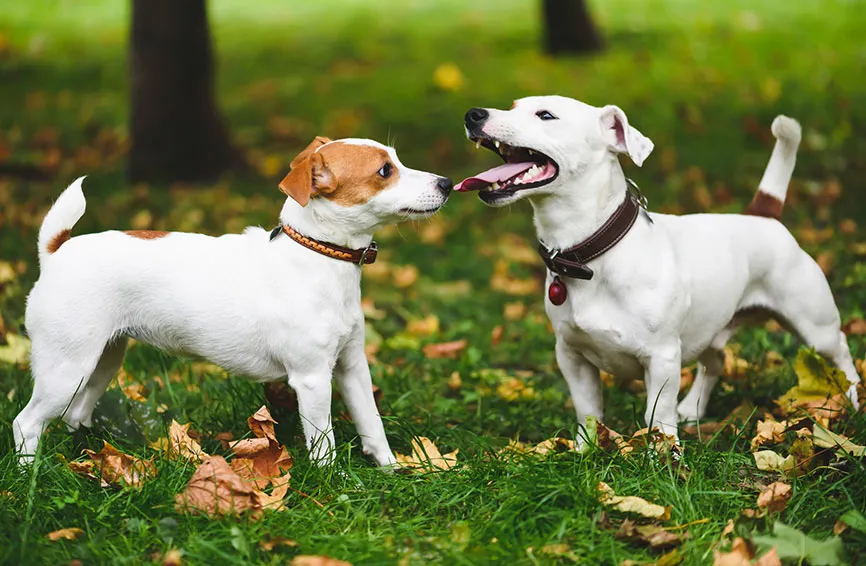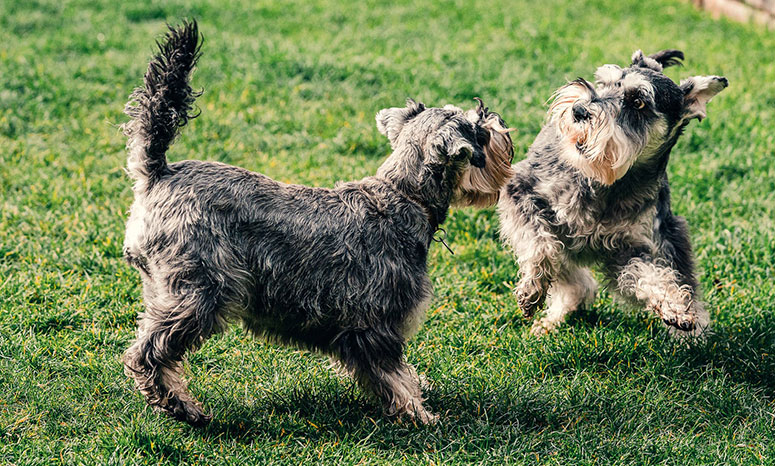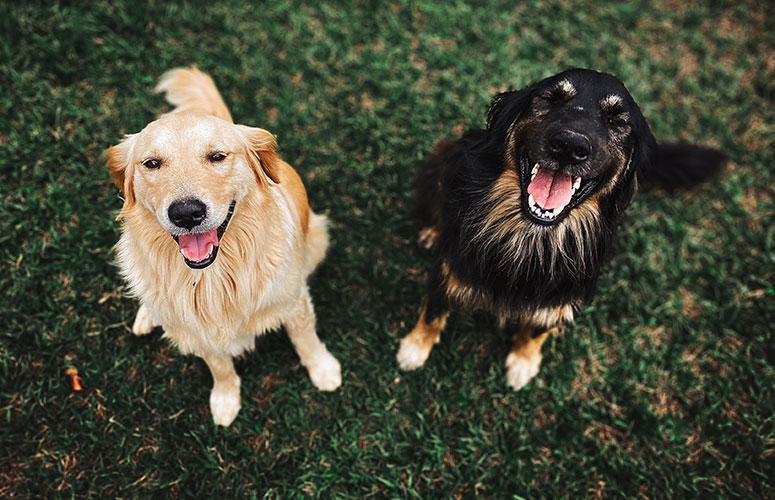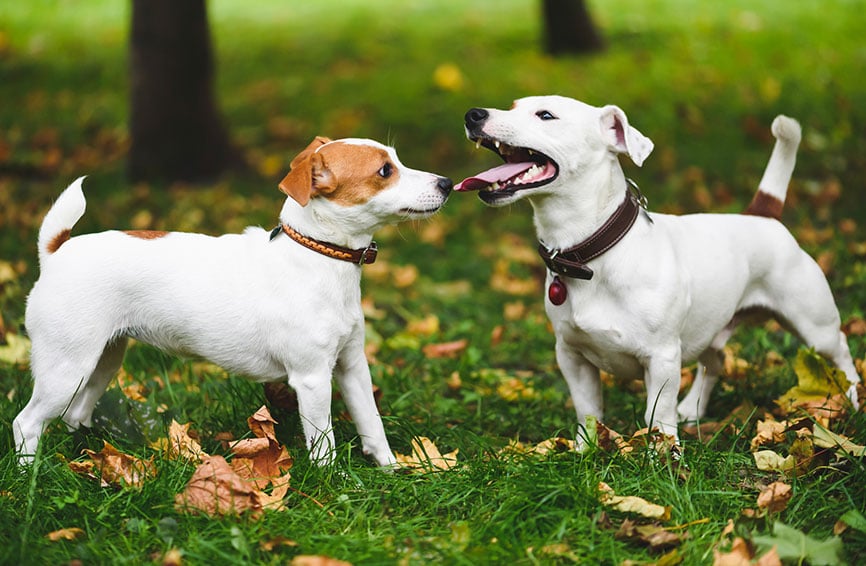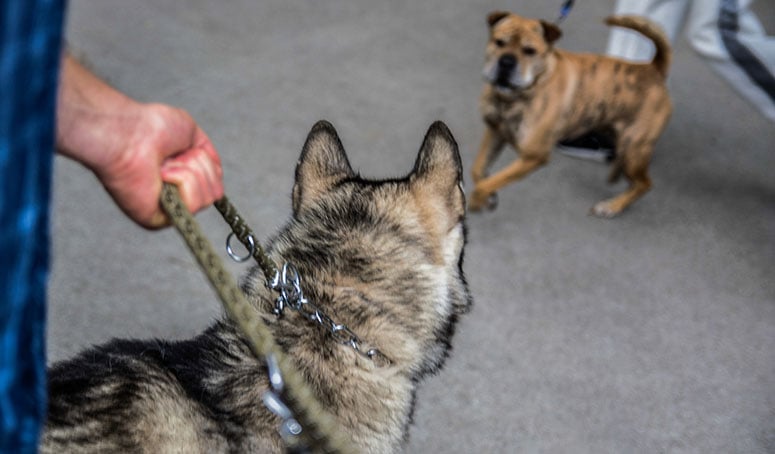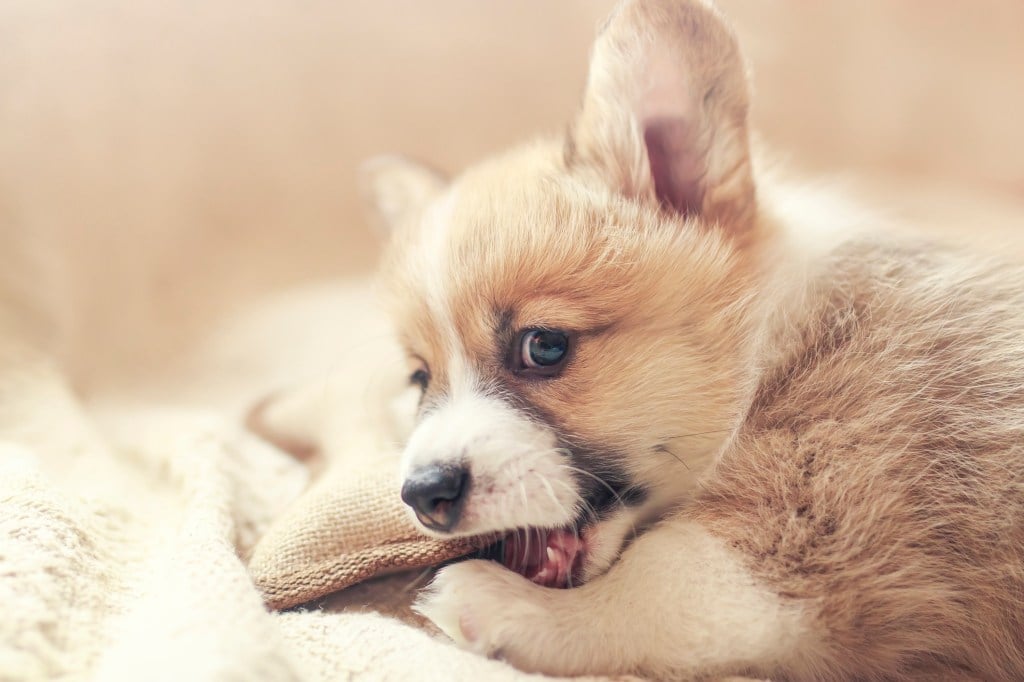Table of Contents
Key Takeaways
- Dogs vary in their ability and interest in socializing with other dogs.
- Before introducing a newly adopted dog to other dogs, carefully consider the personality and temperament of each dog.
- Whenever introducing dogs to each other, take it slow and observe the dog’s behavior to ensure they are not anxious.
Most pet parents are eager to socialize their puppies or adopted adult dogs shortly after bringing them home. Everyone wants a dog who gets along with other dogs and ideally can find a playmate to burn off extra energy.
However, every dog is unique, and some dogs may not want to socialize at all, so it’s essential to read your dog’s cues and figure out what will be best for them. If your dog does seem happy to see other dogs, it’s still crucial to take introductions slowly and get off on the right paw.
Not all dogs need a social life
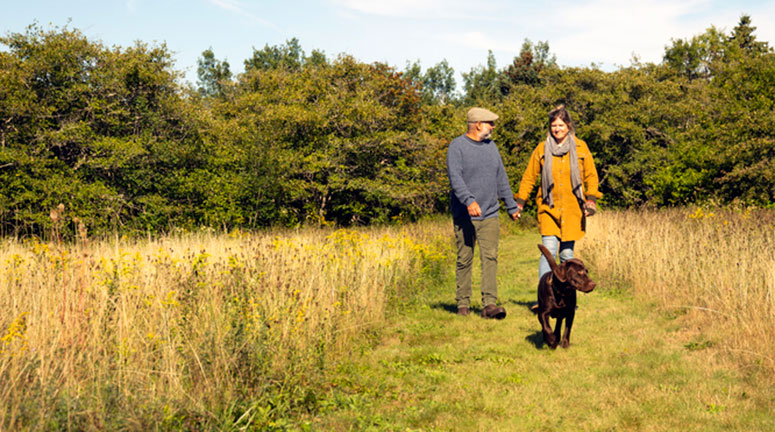
First, be aware that your dog does not need to have a ‘social life’ to be happy. We have humanized dogs so much and think they need to have friends to be fulfilled and enjoy their lives. That is not always the case.
Of course, some dogs love the company of other dogs; they enjoy going to daycare, playing with friends’ dogs and would benefit from having another dog as a companion. But, for a dog who has been traumatized, they could feel uncomfortable, insecure, and afraid if you brought another dog into their home, either for a play date or as a new family member.
Dogs can be perfectly content just enjoying the company of their human family. Dogs don’t sit around on a Friday night and think, “I don’t have enough friends to hang out with!” We are their family, their pack, and especially if they don’t feel safe with other dogs, they won’t benefit from spending time with them.
It can be challenging for people to accept that the life they envisioned for their dog will be different from the reality of what their dog needs and can handle. We must be the ones to change our expectations, rather than asking the dog not to feel afraid. Over time your dog may be able to have one playmate that they enjoy spending time with, but you must develop trust with your dog first and discover who they are before you attempt to find a friend for them.
Once their true personality has blossomed, you will know what other kinds of dogs they will feel most comfortable with, and you can slowly start the process of introducing them to another dog to see if they will get along.
Consider personality before introducing dogs
Before attempting to introduce your dog to another dog, it’s vital you know the other dog’s personality. If the other dog is usually nervous or stressed, gets overwhelmed easily, has a hard time with self-control, is bossy, or has been attacked in the past, they will not be a good match.
Dogs are sensitive to the energy and emotions of all beings around them, including other dogs. The best personality for a meet-and-greet is a confident, relaxed, and easy-going dog who has good self-control and doesn’t get flustered easily.
Puppies are usually hard to be around for an insecure dog, as they don’t respect boundaries and have little self-control. They typically want to play constantly and don’t read signals very well. Plus, you don’t want to traumatize a friend’s puppy because your dog reacts to them due to feeling uncomfortable.
How to introduce your dog to a potential playmate
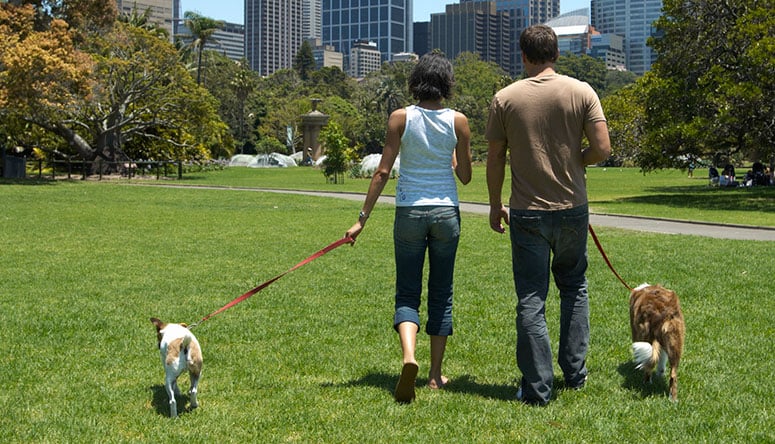
Pet parents should do introductions very slowly and safely for both dogs.
Follow these steps:
- Start by walking them in neutral territory, away from the distractions of other people and dogs.
- Each person holds their dog on a leash, walking parallel 20 feet away, people on the inside, and dogs outside.
- If either dog pulls, barks, growls, or lunges at the other dog, move further away from each other.
- Once they have calmed down, you slowly start walking a little closer, again walking parallel to each other about 20 feet apart.
- If neither dog reacts nervously, you slowly walk a little closer to each other, staying parallel.
- Continue this process until you can walk beside the other person and each dog is calm and relaxed around the other.
This is the ideal outcome, but if the dogs are reacting to each other and you continue to need to move further away, they may not be a good match. It can take several walks together before dogs feel comfortable with each other.
If they aren’t compatible, they will never enjoy walking together. Listen to what your dog is communicating. If they aren’t having a good time, don’t push the experience onto them; respect that they don’t feel comfortable.
How to introduce a puppy to a resident dog
It can be fun and exciting to bring a new puppy into our family, but sometimes it can be frustrating and overwhelming for our resident dog. Try to choose a puppy with a relaxed, easy-going personality, as this will make the transition easier for your adult dog.
Follow these steps:
- Start by putting your adult dog in a separate room when you first bring your puppy home, as you don’t want to overwhelm your puppy. Let your puppy adjust to their new environment for a while.
- Then put your puppy in a playpen with some toys and walk your dog in on a leash. This will keep the energy as calm as possible when they first meet, allowing them to observe each other safely.
- If your dog snaps at the puppy or seems anxious as they watch them through the playpen, simply remove your adult dog from the room for a few minutes to give them time to settle.
- Then calmly walk them back into the room again and repeat this until your adult dog calms down and seems comfortable with your puppy. Allow your dog to take the time they need to accept this new family member.
Your puppy will show you how they feel about your adult dog, too. Are they excitedly trying to interact with them or nervously watching from a distance? If it’s the latter, know that they will need more time to adjust and feel safe with your adult dog before trying to introduce them outside of the playpen.
How the dogs react to each other determines how to move forward. If both seem happy to see each other and completely comfortable, take the puppy out of the playpen and sit down while keeping your adult dog on a leash. See how your dog reacts to the puppy as they walk around. If you notice any signs of anxiety from either of them, separate them again.
However, if both are curious and seem happy around each other, drop the leash and closely monitor them as they get to know each other. Put all toys and bones up and out of reach to avoid any tussling over them. Keep the first few interactions brief, and slowly increase the time they spend together so that neither gets overwhelmed.
Helping your dog adjust to sharing you and your time
Puppies take a lot of energy and time when they are young. It will be a huge adjustment for your other dog to share you and your time. Take them on separate walks for a while so that your adult dog has some quality one-on-one time with you.
It’s also a good idea to have some individual playtime and snuggle time, to give your dog a break from the puppy. It will help them enjoy time together when they don’t feel like they are competing for your attention.
Don’t let dogs and puppies ‘work it out’ on their own
A common misconception is that you should ‘let them work it out’ if there is an issue. This is never a good idea, just like you wouldn’t let children sort out an argument. You, as their dog parent, need to step in if either seems uncomfortable.
Typically, the adult dog shows anxiety when dealing with a puppy who constantly wants to play. If you notice that your adult dog is trying to get away or is turning their head away from the puppy and appears stressed, step in to teach the puppy appropriate behavior.
- The moment you notice your dog feeling stressed, walk between them and body block your puppy away from the other dog, meaning walk them backwards, about 6 feet away from the adult dog.
- Calmly say, “leave it” and the puppy’s name. If the puppy goes immediately back to try again, repeat.
- However, if your puppy does this a third time, slip a leash on them, and escort them to a “time-out.” Don’t look at them or talk to them, or they will be getting attention from you.
- The best time-out room is usually the bathroom or a laundry room. Puppy-proof the room ahead of time and turn on the light for them. Remove the leash and leave them by themselves in the time-out for three minutes.
- After three minutes, open the door and let them out without acknowledging them for a few minutes. If they are barking, whining, or pawing at the door, wait for them to stop for a moment before letting them out.
The time-out works because dogs understand what this separation from the family means. In a pack on the streets or in the wild, a pack member who does something inappropriate would be shunned by the other pack members for a while to let them know that they made a mistake.
If you are calm and consistent when responding, your puppy will learn to play by themselves and have more self-control when playing with your adult dog. If they are playing nicely together, there is no need to say anything, as this is how you expect them to play.
Remember, puppies don’t automatically know what to do; it’s up to us to help them learn manners with every family member, including our other furry kids.
Sarah-Anne Reed is a holistic dog trainer and owner of Pack Dynamics®. Her practice focuses on understanding and respecting dogs as a different species and honoring them as individual beings.
This article is copyrighted by Sarah-Anne Reed and Pack Dynamics®, and no reproduction of this article without the express permission of Sarah-Anne Reed is permitted.
